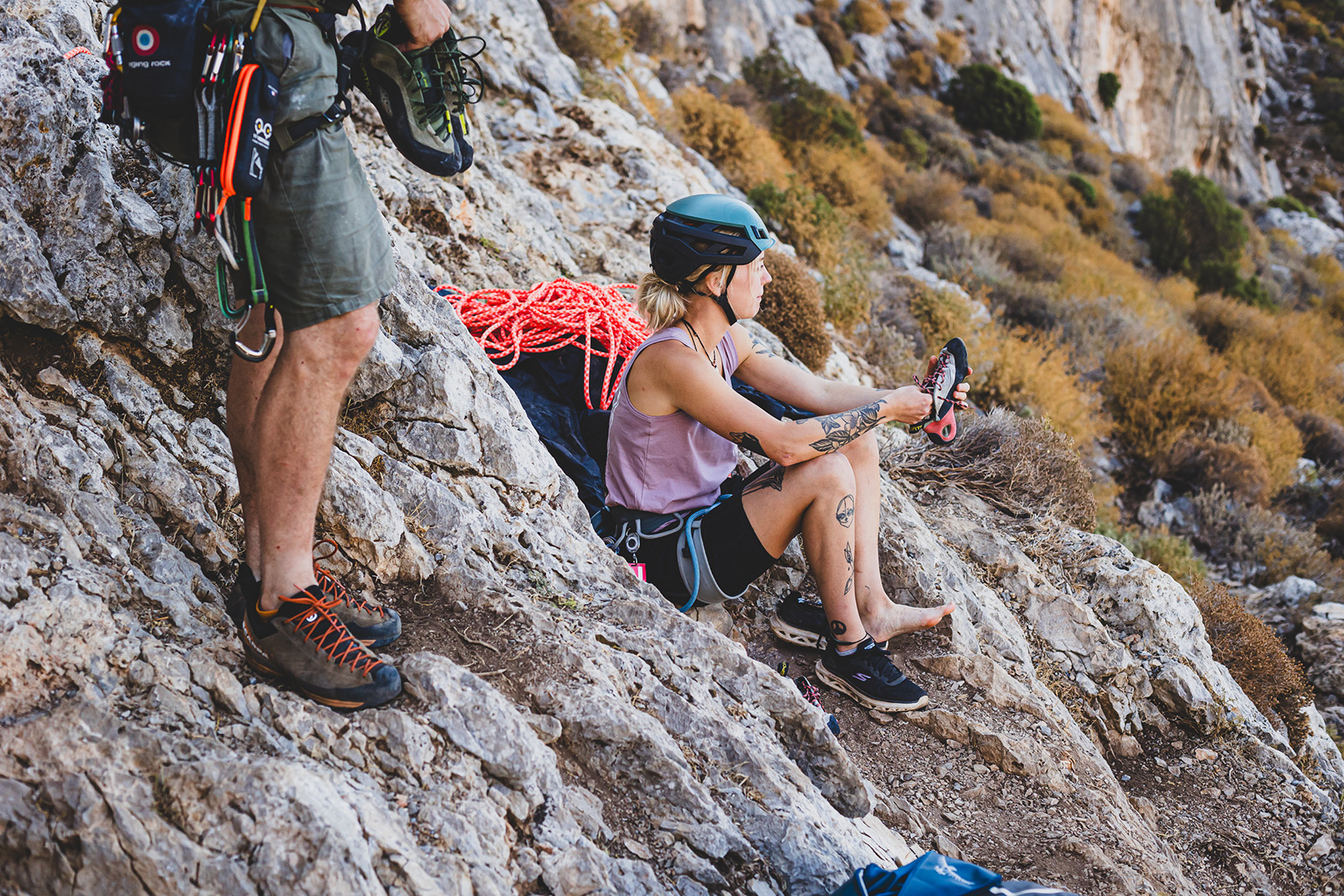Tips for challenging approaches and what to keep in mind at the crag
Klettern by Varuste.net, 30.9.2024
text and images ©Hanna Tyrväinen
How to easily manage long approaches, what to keep in mind at the crag, and during the return trip?
We’ve gathered tried and tested tips and insights for outdoor climbing with our climbing group.
For example, in Kalymnos, there are stunning crags, some of which are easily accessible, while others can be tricky and time-consuming to reach without proper gear or planning. It's a good idea to familiarize yourself with climbing spots in advance using guidebooks and apps, as this will save time and allow you to focus on what matters—enjoying the climb. If you only have time to visit one or two crags that require long approaches during the day, you’ll need to bring all your gear, water, and other necessities with you.
So, what should you consider when making purchases and packing?
Here’s how to get started:
-
A printed guidebook is essential, as there might not be internet access everywhere, and it’s difficult to grasp everything from a phone. The book contains clearly organized information (approach difficulty and optimistic time estimates, shaded and sunny times, seasons, topos, route grades, and whether the crag is suitable for children or dogs).
-
Climbing gear: a long enough rope/ropes, helmet, harness, climbing shoes (or two pairs), enough quickdraws, chalk, belay glasses, a suitable belay device, and gear for anchor work (carabiners, slings, etc.). Check the requirements in advance and double-check your gear list with experienced climbers, and ask for advice at Varuste.net’s climbing section.
-
A proper backpack makes it easier to carry gear and water. Loose bags slow down your approach and tend to get lost.
-
Weather-appropriate clothing and approach shoes, suitable for steep slopes, rocky terrain, and thorny bushes.
-
Sun protection. Sunglasses and sunscreen to avoid burns. Spray-on sunscreen doesn’t stain your hands, making it easy to apply at the crag.
-
A headlamp for rapidly darkening evenings. In unfamiliar terrain, the risk of getting lost or having an accident is high if your phone battery dies and you don’t have a light source.
Other essentials include:
-
A small first-aid kit. It’s especially useful for bandages, disinfectant wipes, painkillers, skin tape, and cold packs. Small cuts can be patched up at the crag, allowing you to continue climbing.
-
Water, electrolytes, and snacks. Estimate your water consumption and pack a bit extra. Bring snacks that can withstand heat. For example, Jollokset have been found to be great hiking snacks as they don’t melt easily in the heat and provide quick energy.
-
A power bank for long climbing days to charge your phone.
-
A phone lanyard. Attach it to yourself or a waist pouch so your phone won’t fall off a cliff. Best selfies at the top.
Waste and hygiene
-
Minigrip bags are handy for packing your own trash and picking up others’ litter too.
-
Bathroom needs. Goats poop everywhere, climbers don’t. In dry, rocky terrain, collect your waste and paper in a bag. Let’s not litter the fragile environment with waste or toilet paper.
-
For women, standing urination devices and for both men and women, uribags are useful on steep crags where it’s not easy to sneak away for a bush pee. No one wants to climb in a pee-smelling area. Practice using these tools in advance so you don’t splash everywhere.
-
A menstrual cup is convenient because of its long emptying interval and can be cleaned with disinfecting wipes.
Other tips:
-
To keep your gear together, make sure your bag is closed to protect it from curious goats and sudden gusts of wind. Shoes can be clipped to your harness with a carabiner while belaying so they don’t roll down the hill into the sea. It’s best not to use rock formations as shelves since you’re likely to forget your stuff there.
-
A helmet is recommended while climbing, belaying, and at the crag. Falling rocks are more than likely, and bloodstains on the rocks are not pleasant for anyone.
-
Agree with your climbing buddies on shared gear usage: for example, not everyone needs to carry their own rope or a large set of quickdraws. You can divide the load among the group.
Report loose bolts, lost items, etc. in local climbing groups and check emergency contacts for local mountain rescue teams (usually found in the guidebook).



